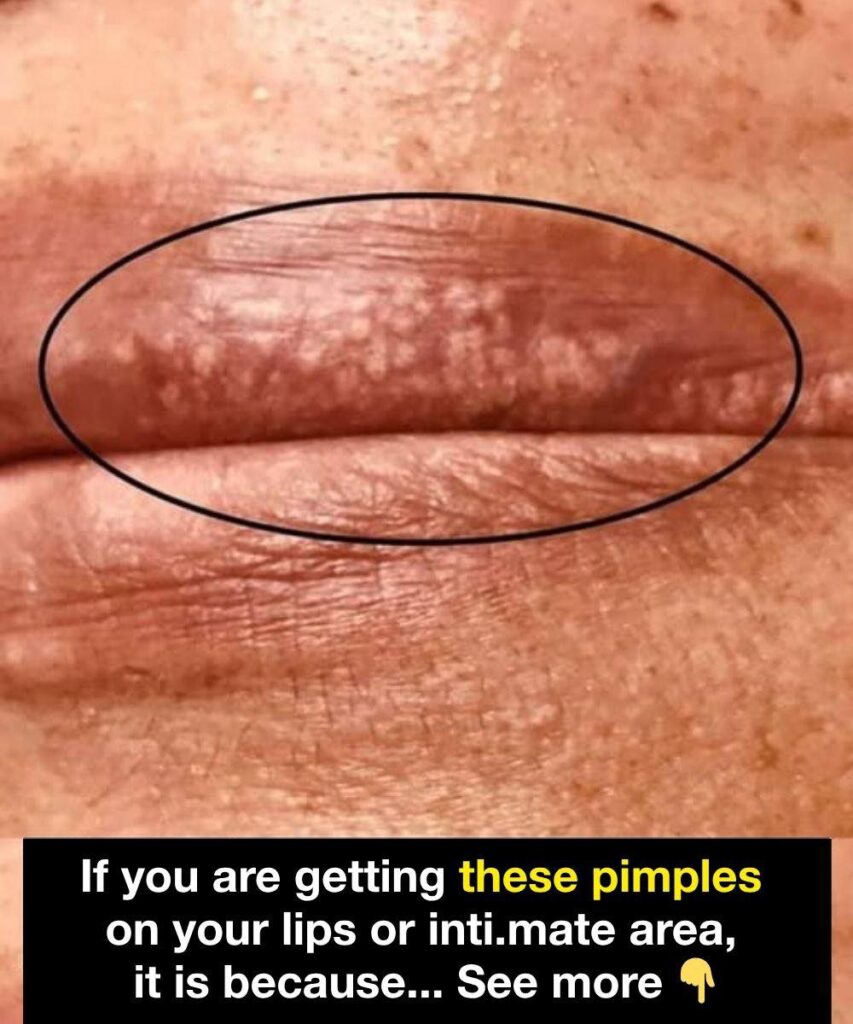
Few things are more uncomfortable (and noticeable) than waking up with a pimple right on your lip line. It’s not only painful — it can make you self-conscious, too. But before you panic or start applying random creams, it’s important to understand why lip pimples happen and how to treat them safely.
The truth is, most pimples around your lips are not serious, and they often go away with the right care. However, knowing what’s behind them helps you prevent future breakouts and spot signs of something that may need medical attention.
Common Reasons for Pimples on the Lips
1. Clogged Pores from Oil or Cosmetics
The skin around your lips has tiny pores that can easily get blocked by oil, dead skin, or products like lip balm, lipstick, or foundation.
When these pores clog up, bacteria grow inside — leading to inflammation and those familiar red, tender bumps.
Tip: Use non-comedogenic (pore-friendly) makeup and skincare products, and make sure to remove all cosmetics before bed.
2. Hormonal Changes
Hormones are one of the biggest culprits behind breakouts — especially during puberty, menstruation, or stress. Hormonal fluctuations increase oil production, which can cause pimples even in unusual places like your lip line or chin.
Tip: Keep your skincare routine consistent, drink plenty of water, and if you notice persistent hormonal acne, talk to a dermatologist — they can recommend safe treatments or medication.
3. Poor Hygiene or Touching Your Face
Frequently touching your lips, resting your chin on your hands, or using unwashed makeup brushes transfers bacteria to your skin. The lip area is particularly sensitive, so even small irritations can turn into pimples.
Tip: Wash your hands often, avoid touching your lips unnecessarily, and clean makeup tools regularly.
4. Reactions to Food or Toothpaste
Certain ingredients in spicy foods, oily dishes, or flavored lip products can irritate the skin. Likewise, toothpaste with fluoride or sodium lauryl sulfate (SLS) may cause small bumps near the lips for some people.
Tip: Switch to a mild toothpaste without SLS and avoid applying flavored or heavily scented lip products.
5. Stress and Lack of Sleep
Stress increases cortisol levels, which can trigger oil production and inflammation. Combine that with a lack of rest, and your body’s ability to heal and
Common Reasons for Pimples on the Lips
1. Clogged Pores from Oil or Cosmetics
The skin around your lips has tiny pores that can easily get blocked by oil, dead skin, or products like lip balm, lipstick, or foundation.
When these pores clog up, bacteria grow inside — leading to inflammation and those familiar red, tender bumps.
Tip: Use non-comedogenic (pore-friendly) makeup and skincare products, and make sure to remove all cosmetics before bed.
2. Hormonal Changes
Hormones are one of the biggest culprits behind breakouts — especially during puberty, menstruation, or stress. Hormonal fluctuations increase oil production, which can cause pimples even in unusual places like your lip line or chin.
Tip: Keep your skincare routine consistent, drink plenty of water, and if you notice persistent hormonal acne, talk to a dermatologist — they can recommend safe treatments or medication.
3. Poor Hygiene or Touching Your Face
Frequently touching your lips, resting your chin on your hands, or using unwashed makeup brushes transfers bacteria to your skin. The lip area is particularly sensitive, so even small irritations can turn into pimples.
Tip: Wash your hands often, avoid touching your lips unnecessarily, and clean makeup tools regularly.
4. Reactions to Food or Toothpaste
Certain ingredients in spicy foods, oily dishes, or flavored lip products can irritate the skin. Likewise, toothpaste with fluoride or sodium lauryl sulfate (SLS) may cause small bumps near the lips for some people.
Tip: Switch to a mild toothpaste without SLS and avoid applying flavored or heavily scented lip products.
5. Stress and Lack of Sleep
Stress increases cortisol levels, which can trigger oil production and inflammation. Combine that with a lack of rest, and your body’s ability to heal and regulate hormones weakens — leading to more breakouts.
Tip: Try to get 7–8 hours of sleep, manage stress with exercise or mindfulness, and keep your skincare simple but consistent.
6. Possible Skin Conditions
Sometimes, what looks like a pimple isn’t acne at all. Cold sores (caused by herpes simplex virus) or small white bumps called Fordyce spots can appear near the lips. These require different care, so identifying the difference is important.
Tip: If the bump is painful, itchy, filled with fluid, or keeps coming back in the same spot, see a doctor for proper evaluation.
What You Should Do
✅ Keep the area clean: Gently wash with warm water and a mild, fragrance-free cleanser twice a day.
✅ Avoid popping or squeezing: It can cause infection, scarring, or spread bacteria.
✅ Apply a warm compress: This helps reduce swelling and speeds healing.
✅ Use spot treatments carefully: A dab of benzoyl peroxide or salicylic acid (if safe for your skin type) can help dry out the pimple.
✅ Stay hydrated and eat balanced meals: A diet rich in fruits, vegetables, and low in processed foods supports skin health.
When to See a Doctor
If the bumps:
Keep coming back in the same area
Are painful, blister-like, or filled with fluid
Don’t improve after a week or two
Are accompanied by other symptoms (like fever or swelling)
…then it’s time to consult a dermatologist or healthcare provider. They can confirm whether it’s acne, an infection, or something else — and recommend proper treatment.
Final Thoughts
Pimples on your lips might feel frustrating, but they’re usually harmless and temporary. With a bit of patience, good hygiene, and mindful skincare, they can heal quickly and leave your skin smooth again.
Remember: your skin speaks to you. Pimples aren’t just random — they’re signs of what your body or routine might need adjusting. Treat your skin kindly, keep things clean, and let your natural glow do the talking.